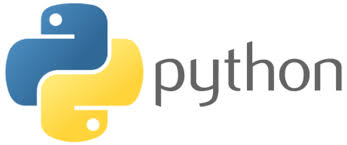CS 100

Scientific Computing
Activity 4 - Practice with functions
Download demo_functions.py and open it in Thonny. Save it to your cs100/ch1 folder. Run the program by clicking the green ‘play’ button. You should see the following as a result in the shell area:
Hello students
3566.5
Remember that if you want to use comments to silence out parts of Python instructions, use #. For example,
#print("This is commented out by the # symbol")
print("This is not commented out")
print("This also is not commented out") # but this part is a comment
Part 1: Ways you invoke/call a function that has a return and a function that does not have return.
Experiment calling hello() function in several ways.
- Write in comments, what is the output as a result of the function call:
hello() - Write in comments, what is the output as a result of the function call:
print(hello()) - Write in comments - what do you think happened? What is different? Where is
Nonecoming from? Why would we ONLY want to use the callhello(), and notprint(hello())?
Now, experiment calling avg() function in several ways.
- Write in comments, what is output to the shell as a result of:
avg(4,8) - Write in comments, what is output as a result of:
print( avg(4,8) ) - Write in comments, what is output as a result of:
rez = avg(4, 8) print(rez) - Write in comments - what do you think happened? What is different? Why would we NOT want to use the call
avg(4,8)?
Part 2
-
Add code to compute the average of 50 and 75 and print the result.
- Copy the function definition for
long_helloshown below. Test the function to see that it works, i.e., call/invokelong_hello()after it is defined.def long_hello(): print("Hello students") print("Oh hi") print("How are you?") print("I'm good thanks.") -
Define a function
prod(num1, num2)that takes two numbers as input and returns their product. Call/invoke your function to test it. -
Define a function
add(x, y)that adds its two parameter and prints the result. Call/invoke your function to test it. -
Define a function
subtract(x, y)that subractsyfromxand prints the result. Call/invoke your function to test it. - Define a function
hello(name)that has a single parameter that is a string and prints out a few welcoming messages. For example, if “Heather” is passed as an argument via the function callhello("Heather"), then the function should print out:Hello, Heather Welcome to CS 100 Have an awesome day! - Add the following function definition.
def mystery(): print("A") print("B") return "123" print("C") print("D") - Call the function as follows. What is output to the shell? Explain in comments.
myResult = mystery() print(myResult)
Part 3: Optional - if you have time
- Write a function
weirdSumthat takes four numbers as input and returns the sum of the first two multiplied by the sum of the last two. - Write a function
secondsTodaywith no parameters that prints out the number of seconds in a day (note: there are 24 hours in a day; 60 minutes in an hour; and 60 seconds in a minute). When called, your function should produce the following output:IN A DAY THERE ARE: 86400 seconds. - Write a function that solves a generic quadratic equation of the form ax2 + bx + c = 0, where
a,b, andcare passed as parameters. Note: to compute square root of 7 you may use:import math result = math.sqrt(7)
How to submit
Make sure you saved your work and that it runs without errors. Submit your demo-functions.py file on Moodle.